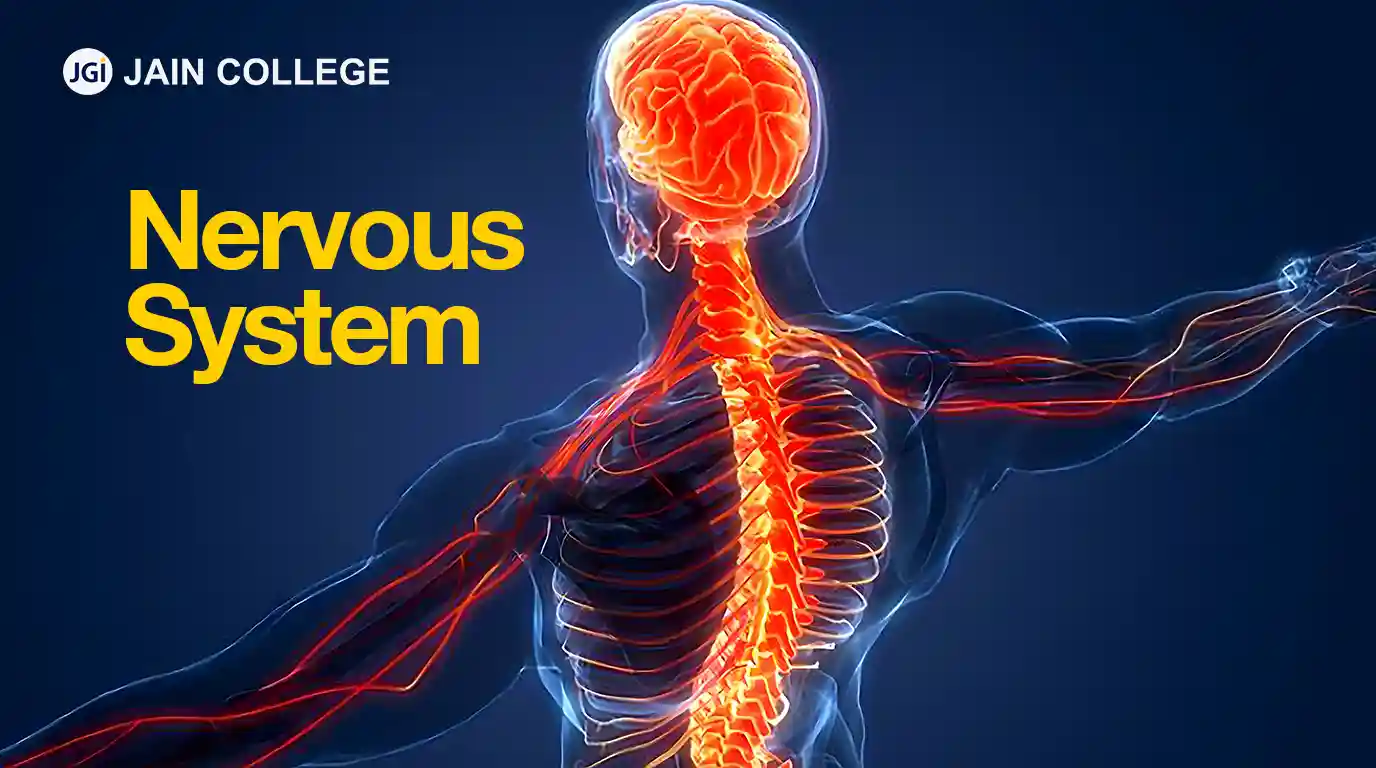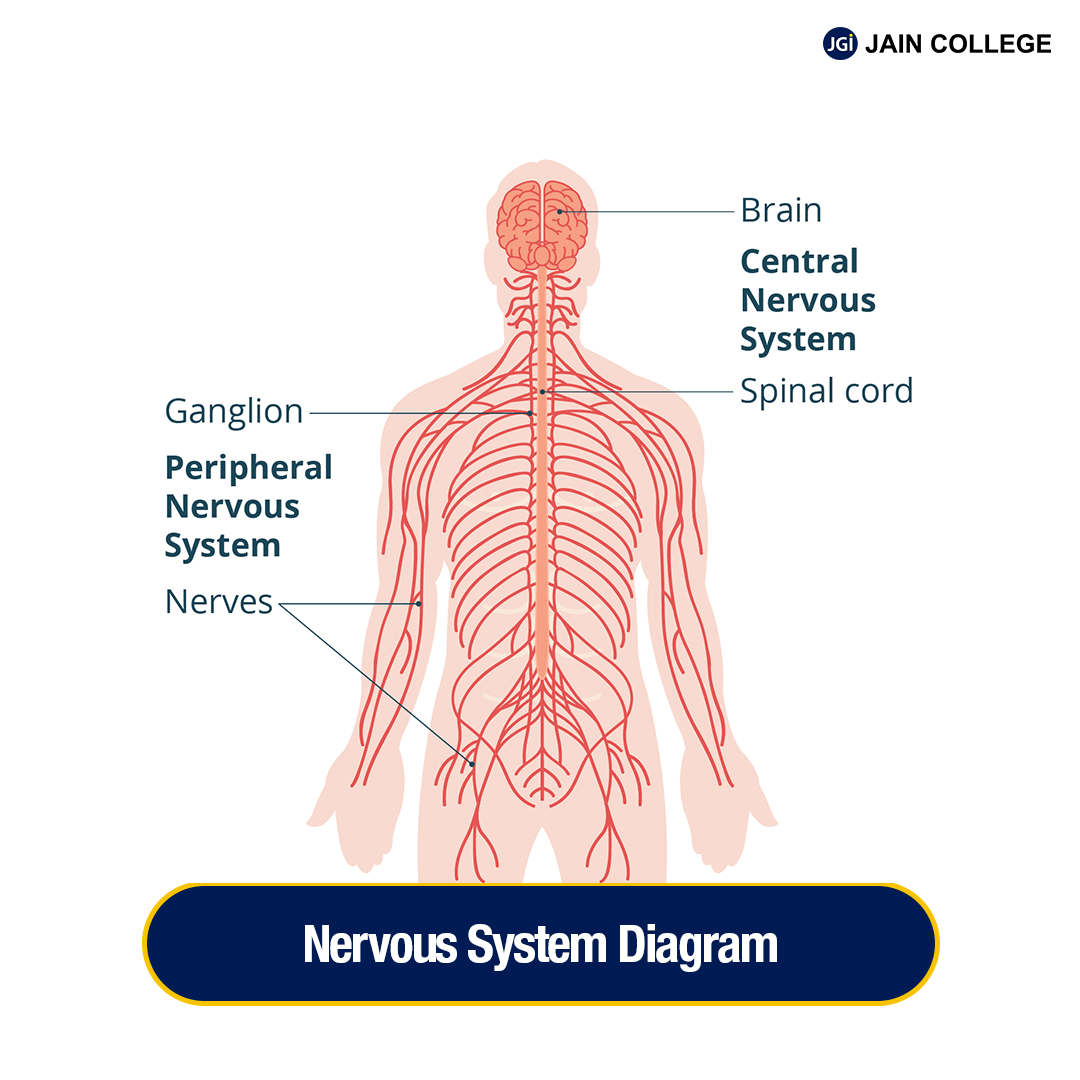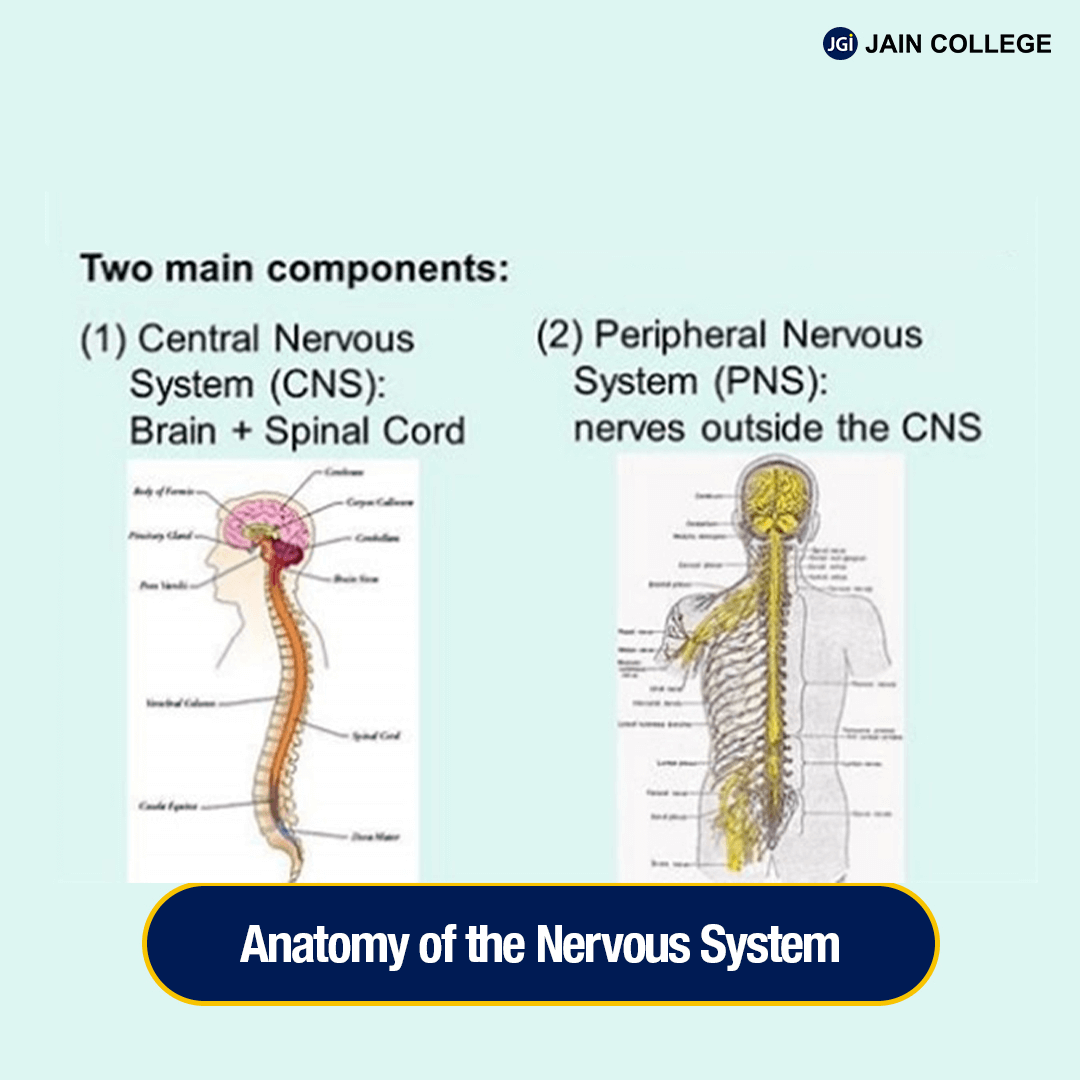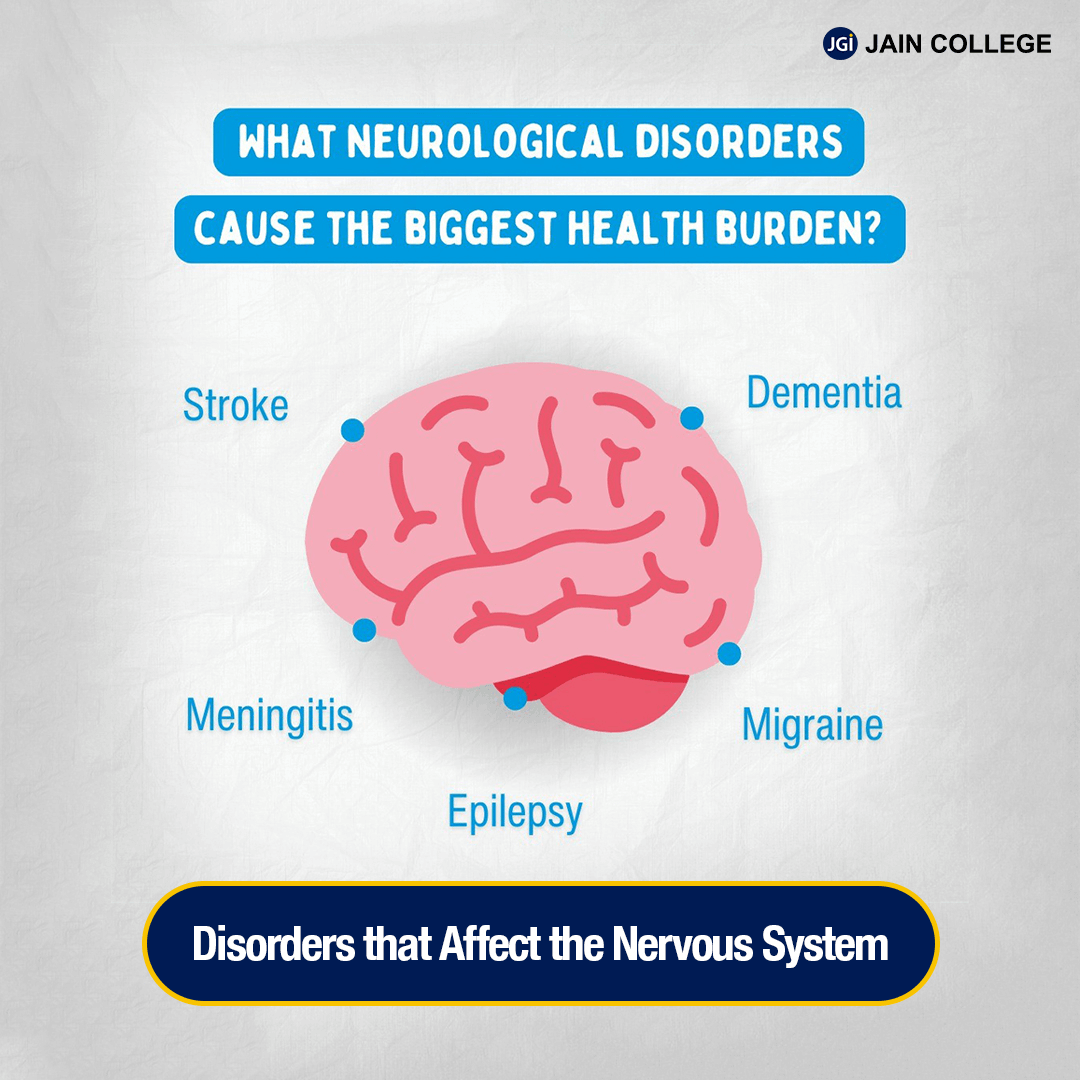
Have you ever reacted in a split second when you touch something hot or hear a loud sound? Or perhaps you have jumped in surprise when something sudden happens around you?
These lightning-fast reactions happen thanks to one of the most remarkable systems in your body—the nervous system.
Think of the nervous system as our body's ultimate communication network, always working behind the scenes to send messages, control movements, and help us react to the world around us. It is a super-fast and incredibly complex system that helps us think, feel, move, and make decisions in real-time.
The nervous system is made up of billions of specialised cells, and it's not just about our brain, it involves many different organs and pathways that keep us connected to everything happening inside and outside our body. From the simple act of blinking to the intricate way we process emotions, it is the nervous system that makes it all possible.
Imagine our body as a high-tech machine, and the nervous system is the central control hub, constantly processing data, sending out instructions, and making sure everything runs smoothly. Without it, we would not be able to move a muscle or even think a single thought.
In this article, let us dive into the amazing world of the nervous system. Let us explore how it works, and its anatomy, and highlight some fascinating facts that show just how essential it is for everything we do.
Get ready to discover the secrets behind how our body responds to the world around us!
The nervous system is a complex network of nerves and cells that carry messages to and from the brain and spinal cord to various parts of the body.
Here is the Nervous System Diagram:

The nervous system is made up of two main parts:
Every time you catch a ball, feel pain, laugh at a joke, or remember a friend’s birthday, your nervous system is at work.
The nervous system functions by sending and receiving signals at lightning speed, making sure our body responds instantly to whatever is happening around us.
Without the nervous system, we would not be able to experience the world in the way we do. It is the nervous system that helps us think, move, feel, and react.
Also Read: Digestive System
Anatomy of the Nervous System - What are the Parts of the Nervous System?
The two main components of the nervous system are:

This is the centre of the nervous system, where all the important decisions are made. It includes:
Somatic Nervous System:
The somatic nervous system controls all the body’s voluntary movements, such as walking, running, writing, or waving
Autonomic Nervous System:
The autonomic nervous system controls all the body's involuntary functions, such as breathing, the heartbeat and digestion.
The autonomic nervous system is further divided into:
The Sympathetic Nervous System:
The Parasympathetic Nervous System:
Overall, the nervous system parts function in perfect sync, making sure we move, react, and stay alive without even thinking about it.
The main function of the nervous system is to coordinate body activities by transmitting signals, enabling perception, thought, movement and vital functions. Our nervous system uses nerve cells called neurons to send signals, or messages, all over the body.
Here are the primary functions of the nervous system.
The nervous system is responsible for:
Here is what the nervous system does:
The messages sent by the nervous system from various parts of our body to our brain, and from our brain back out to our body parts to tell our body what to do. These messages regulate our:
The nervous system functions non-stop to keep us alive, aware, and in action.
Our brain is like the control centre of the nervous system that makes decisions and sends instructions. It also helps us to think, feel, and remember things.
The spinal cord functions by carrying messages between the brain and the rest of the body.
Nerves are the fundamental units of the nervous system, which are spread throughout our body, and function by delivering signals to cells, tissues, muscles and other organs, such as:
For example:
If we touch something hot, our nerves instantly send a message to our brain, which quickly tells us to withdraw our hand.
Thus, the nervous system plays a fascinating role by keeping us safe, helping us to think, and allowing us to experience the world around us!

The nervous system is called the command centre of the human body, which is mainly composed of our brain, spinal cord and nerves. The nervous system functions by controlling both the voluntary and involuntary activities in our body.
Certain conditions and nervous system disorders can affect the functioning of our nervous system, causing problems with movement, memory, or even emotions.
Here are some of the most common nervous system diseases:
This happens when the blood flow to the brain is blocked, causing brain cells to stop working. It can lead to difficulty in speaking, moving, or remembering things.
A condition that causes seizures, which are sudden bursts of electrical activity in the brain. This can make a person lose control of their body for a short time.
An infection that causes swelling in the brain and spinal cord. It can be very serious and needs immediate medical attention.
This affects movement and balance, making simple tasks like writing or walking difficult over time.
A condition that affects memory and thinking, usually in older people. It can make remembering names, places, or even loved ones very hard.
These are just a few examples of common conditions or nervous system diseases that affect the Nervous System.
Since the nervous system is delicate, many factors such as injuries, infections, and even stress can affect its functioning process.
Hence, it is always recommended to stay physically active, including a healthy or balanced diet and nutritious food, adequate sleep and staying stress-free for a healthy brain and nervous system.
Fact No. 1: A human brain needs a lot of blood and oxygen. About 20% of the blood pumped by our heart goes to the brain
Fact No. 2: Axons and dendrites vary in size, but axons are generally longer, and sometimes an axon can be up to a meter long
Fact No. 3: The human brain contains approximately 86 billion nerve cells or neurons. As people get older, they have fewer nerve cells in their brain
Fact No. 4: Neurons receive signals in a short antenna-like part called the dendrite, and send signals to other neurons with a long cable-like part called the axon
Fact No. 5: Older people are more likely to remember recent events or learning new things, and this is mainly because of the fewer nerve cells in their brain
Fact No. 6: Our brain is like the central processing unit (CPU) in a computer, our spinal cord is a long tube of nerves like a thick electrical cable, and our nerves are like signal wires
Fact No. 7: Our body comprises billions to trillions of nerve cells, among which our brain comprises 100 billion nerve cells, and the spinal cord is composed of 13.5 million nerve cells
Fact No. 8: Our central nervous system resembles a tree trunk that contains the brain and spinal cord. The branches are our peripheral nervous system. These branches extend from the trunk, i.e. from the brain and spinal cord, to reach all parts of your body.
Fact No. 9: According to recent research, Scientists are developing ways to “hack” into the human nervous system, gaining the ability to control brain cells with a flash of light. However, it should be noted that these studies were performed using mouse cells only.
Also Read: The Facts about the Digestive System.
The nervous system is the body's fast-acting control centre, helping us respond to our environment, communicate with others, and even think and feel.
From the simple reflex of pulling our hand away from a hot surface to the complex thought processes involved in making decisions, the nervous system is always at work, silently but powerfully keeping everything in sync.
Read more about the nervous system parts and functions, and learn some interesting facts about the human nervous system on our blogs @ https://www.jaincollege.ac.in/blogs.
Join JAIN College for top-notch Science, Commerce, and Arts programmes. Secure your path to success today!
It functions as the body's control center, helping us think, move, feel, and react to the world around us. It includes the brain, spinal cord, and nerves.
Without it, we wouldn’t be able to walk, talk, breathe, or even feel emotions. It keeps everything in our body working smoothly.
It uses tiny electrical signals, like a super-fast messaging network, to send and receive information between the brain and the body.
Damage can cause problems like memory loss, trouble moving, or even difficulty sensing pain. Some serious conditions include stroke, epilepsy, and paralysis.
Stay active, eat brain-boosting foods, get enough sleep, and manage stress. Our nervous system works hard, so take care of it!

JAIN PU College, a part of the renowned JGI Group, is committed to empowering students with quality education.
Beyond academics, the college ensures its online content reflects the same standard of excellence. Every blog and article is meticulously vetted and proofread by subject matter experts to ensure accuracy, relevance, and clarity. From insightful educational topics to engaging discussions, JAIN PU College's content is crafted to inform, inspire, and add value to its readers, reflecting the institution's commitment to intellectual growth and innovation.
View all Blogs